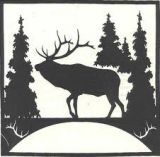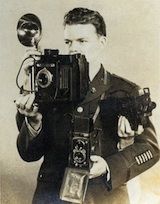- Forum
- General Discussion | Introductions | Off Topic Forum
- Photography General Discussion
- problems with ambient light
problems with ambient light
-
 Topic Author
Topic Author
- g1na3
- New Kid On The Block
-
- Nikon D5000
- Followers: 5
- Posts: 33
-
Points:
0
Post #125250
-

- Bobby
- New Kid On The Block
-
- Nikon D700
- Followers: 3
- Posts: 42
-
Points:
0
Post #125261
Try not to shoot into the sun. Harsh sun at that time of day, which will cause the blown out pictures. Use a hood of sorts to view the LCD/Viewfinder, and last but not least, if not sure, shoot in RAW.
-
 Topic Author
Topic Author
- g1na3
- New Kid On The Block
-
- Nikon D5000
- Followers: 5
- Posts: 33
-
Points:
0
-

- MLKstudios
- Banned
-
- D800 ;-)
- Followers: 72
- Posts: 4480
-
Points:
2
Post #125297
Matthew L Kees
MLK Studios Photography School
www.MLKstudios.com
[email protected]
"Every artist, was once an amateur"
-
 Topic Author
Topic Author
- g1na3
- New Kid On The Block
-
- Nikon D5000
- Followers: 5
- Posts: 33
-
Points:
0
Post #125307
MLKstudios wrote: You might want something like this:
www.filmtools.com/lcdvf.html
Thanks but any suggestions on how to get the correct exposure, seeing that is my main concern.
-

- Henry Peach
- Apprentice
-
- I currently use a 5DII or Sony Nex-3 most of the time.
- Followers: 50
- Posts: 2925
-
Points:
16
Post #125330
-

- MLKstudios
- Banned
-
- D800 ;-)
- Followers: 72
- Posts: 4480
-
Points:
2
Post #125340
But, you also need a starting point for an exposure. That's when the meter is valuable.
On another thread, I explained how to use the exposure meter (your light meter) in three steps:
1. Set the ISO (low for bright sun, and higher for low light).
2. Adjust the aperture (f/stop) to a low number.
3. Using the meter, adjust the shutter speed till you get a centered indication (a line in the middle).
If the shutter speed is below 1/60 (or so), increase the ISO and start over.
There are many factors to getting a perfect exposure, and you will learn to fine tune them after viewing a few thousand images. For now you just want to get a decent exposure (f/stop and shutter speed combo) that gets you a viewable image.
Other factors include what metering mode you are in (use Center Weighted for now), what lens you have attached (a prime lets you shoot available light), using a flash (for real low light) and learning to SEE a scene like a photographer does.
What first appears bright to us, can be very low light to a camera.
Matthew
PS this may not make total sense yet, but will get you thinking about how exposure works:
www.photographytalk.com/photography-arti...tipusing-a-gray-card
Matthew L Kees
MLK Studios Photography School
www.MLKstudios.com
[email protected]
"Every artist, was once an amateur"
- Forum
- General Discussion | Introductions | Off Topic Forum
- Photography General Discussion
- problems with ambient light
Latest Reviews
The Canon EOS R100 is an entry-level mirrorless camera introduced in 2023. But just because it’s an entry-level camera doesn’t mean it’s a bare-bones camera. Find out why in this review!
Nikon’s retro-looking Nikon Zfc is anything but retro. Under its classic body is a host of features and amenities that make it a worthwhile compact mirrorless camera for 2024.
The Canon EOS R50 is one of the newest R-system cameras from Canon. Is it worth your money? Find out all the details you need to know in this comprehensive review.
The Sony FE 70-200mm f/2.8 GM OSS II is Sony’s flagship mirrorless zoom lens. As such, it’s loaded with features and has a top-shelf build quality that makes it a top pick!
Latest Articles
Using leading lines in photography helps improve the composition by drawing viewers in and leading their eye from the foreground to the background. Explore some fine examples of this in this guide!
The Insta360 has one of the best lineups of action cams and 360-degree cameras. With these Insta360 accessories, you can elevate your photography and videography game!
Creating impactful photos of landscapes depends on many factors, not the least of which is your talent behind the lens. This guide explores other elements required for the best product.
The Canon EOS R100 is an entry-level mirrorless camera introduced in 2023. But just because it’s an entry-level camera doesn’t mean it’s a bare-bones camera. Find out why in this review!
Are you ready to upgrade your camera? Before buying new, you might consider the value of purchasing used gear to save money.
The Olympus OM-D E-M10 Mark IV is a micro four thirds camera released in 2020. It’s an entry-level system along with the OM-D E-M5 Mark III. Use this guide to determine which one is best for you!
Blue hour photography might not be as well known as golden hour photography, but it is every bit as good a time to create epic images of landscapes. Learn how in this quick tutorial!
Nikon’s retro-looking Nikon Zfc is anything but retro. Under its classic body is a host of features and amenities that make it a worthwhile compact mirrorless camera for 2024.














